Guitar tabs are a fantastic way for guitar players to learn new songs. This guide from guitarplayers.net will show you how to read guitar tabs, understand the symbols, and use tabs to improve your guitar playing skills.
1. What Exactly Are Guitar Tabs and Why Should You Use Them?
Guitar tabs, short for tablature, are a simplified form of musical notation specifically designed for guitar. Guitar tabs offer a visual representation of where to place your fingers on the fretboard to play specific notes or chords, making it an accessible and efficient way to learn guitar.
- Beginner-Friendly: Guitar tabs are easier to learn compared to standard music notation.
- Visual Representation: Guitar tabs show you exactly where to put your fingers on the fretboard.
- Quick Learning: You can learn songs quickly without needing to know how to read traditional sheet music.
- Versatility: Guitar tabs can represent both chords and single notes.
- Accessibility: A vast number of guitar tabs are available online for free.
2. Understanding the Basic Structure of Guitar Tabs
Guitar tabs use a system of lines and numbers to represent the guitar strings and frets. The six lines correspond to the six strings of a guitar, and the numbers indicate which fret to press down on each string.
- Lines: Six horizontal lines represent the six strings of the guitar.
- The top line represents the high E string (the thinnest).
- The bottom line represents the low E string (the thickest).
- Numbers: Numbers on the lines indicate the fret to be played on that string.
- ‘0’ means the open string (no fret pressed).
- ‘1’ means the first fret, ‘2’ means the second fret, and so on.
- Reading Direction: Guitar tabs are read from left to right.
- Vertical Alignment: Numbers aligned vertically indicate a chord where all the notes are played simultaneously.
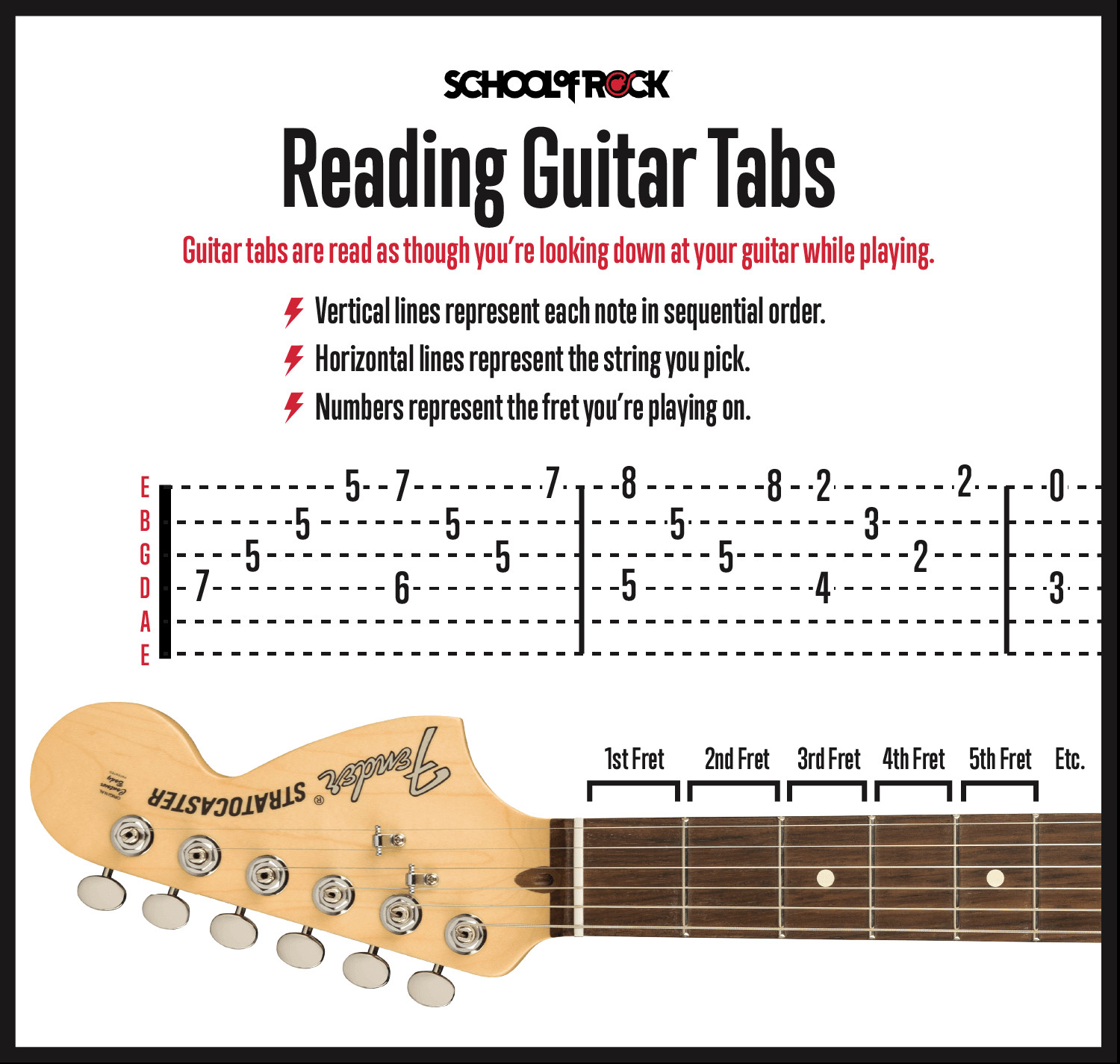 Guitar tabs example showing strings and frets
Guitar tabs example showing strings and frets
3. How to Decipher Guitar Tab Symbols for Techniques
Guitar tabs aren’t limited to just lines and numbers; they also incorporate symbols to indicate various playing techniques. Understanding these symbols is crucial to accurately interpret and play guitar tabs.
3.1. Essential Guitar Tab Symbols
| Symbol | Technique | Description |
|---|---|---|
| h | Hammer-on | Strike a note by “hammering” onto the fretboard with a finger, without picking. |
| p | Pull-off | Pluck a string by “pulling” off a fretted finger, sounding the note below. |
| / or | Slide | Slide your finger from one fret to another without lifting it off the string. / indicates sliding up, indicates sliding down. |
| b | Bend | Bend the string up or down to raise the pitch of the note. The amount of bend (e.g., ½ step, full step) is often indicated. |
| r | Release | After bending a string, release the bend to return to the original pitch. |
| v or ~ | Vibrato | Vibrate the string by rapidly and slightly bending it up and down, creating a wavering sound. |
| x | Muted Note | Play the string with a muted sound by lightly touching it with your fretting hand. |
| PM or P.M. | Palm Mute | Mute the strings by resting the palm of your picking hand lightly on the strings near the bridge, creating a dampened sound. |
| T | Tapping | Fret a note by tapping the string onto the fretboard with a finger from your picking hand. |
| Up and Down Arrows | Strumming (Upstrokes/Downstrokes) | Indicate the direction of the strumming motion. A downstroke is from the higher strings to the lower strings, while an upstroke is the reverse. |
3.2. Palm Muting: Creating a Dampened Sound
Palm muting is a technique used to create a dampened, percussive sound by resting the palm of your picking hand on the strings near the bridge while picking. Look for “PM” or “P.M.” in the guitar tab to indicate when to use this technique.
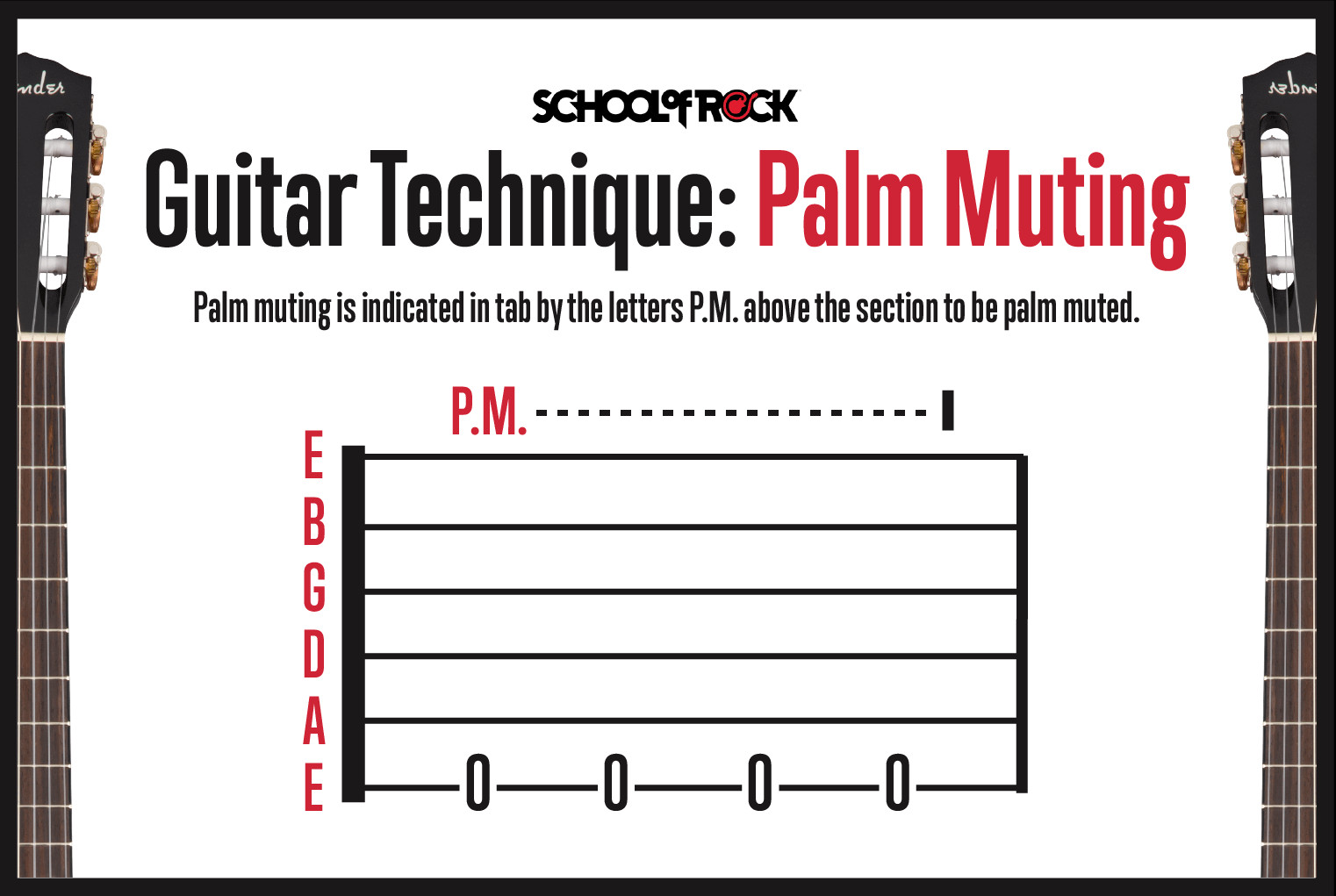 Guitar technique palm muting with the hand
Guitar technique palm muting with the hand
3.3. Muted Notes: Silencing Specific Strings
Muted notes, represented by an “x” in the guitar tab, involve silencing a specific string by lightly touching it with your fretting hand. This technique adds a percussive element to your playing.
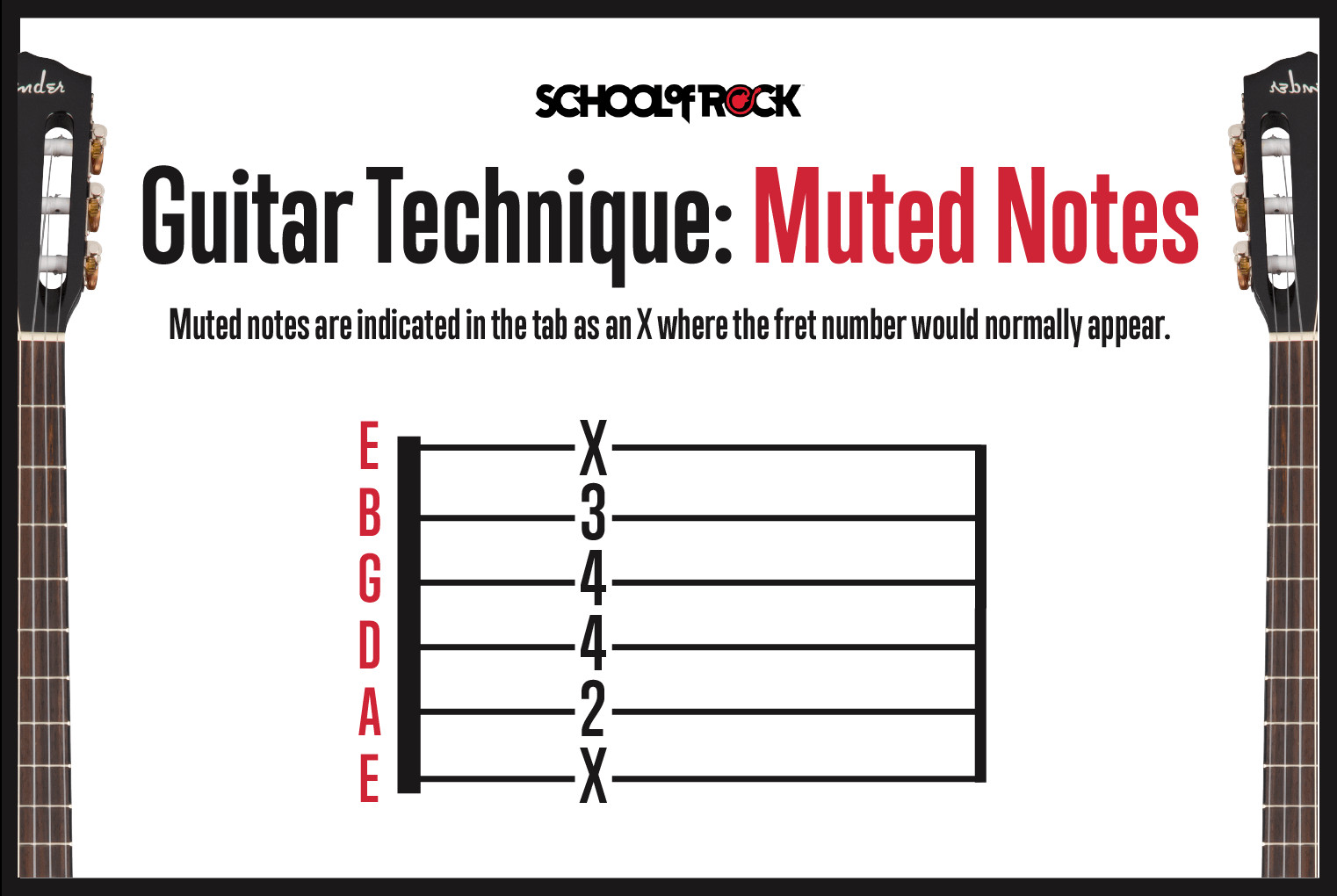 Guitar technique muted notes with the hand
Guitar technique muted notes with the hand
3.4. String Bending: Adding Expression and Emotion
String bending is a technique used to alter the pitch of a note by pushing or pulling the string, adding expression and emotion to your playing. Guitar tabs often indicate the amount of bend required, such as ½ step or full step.
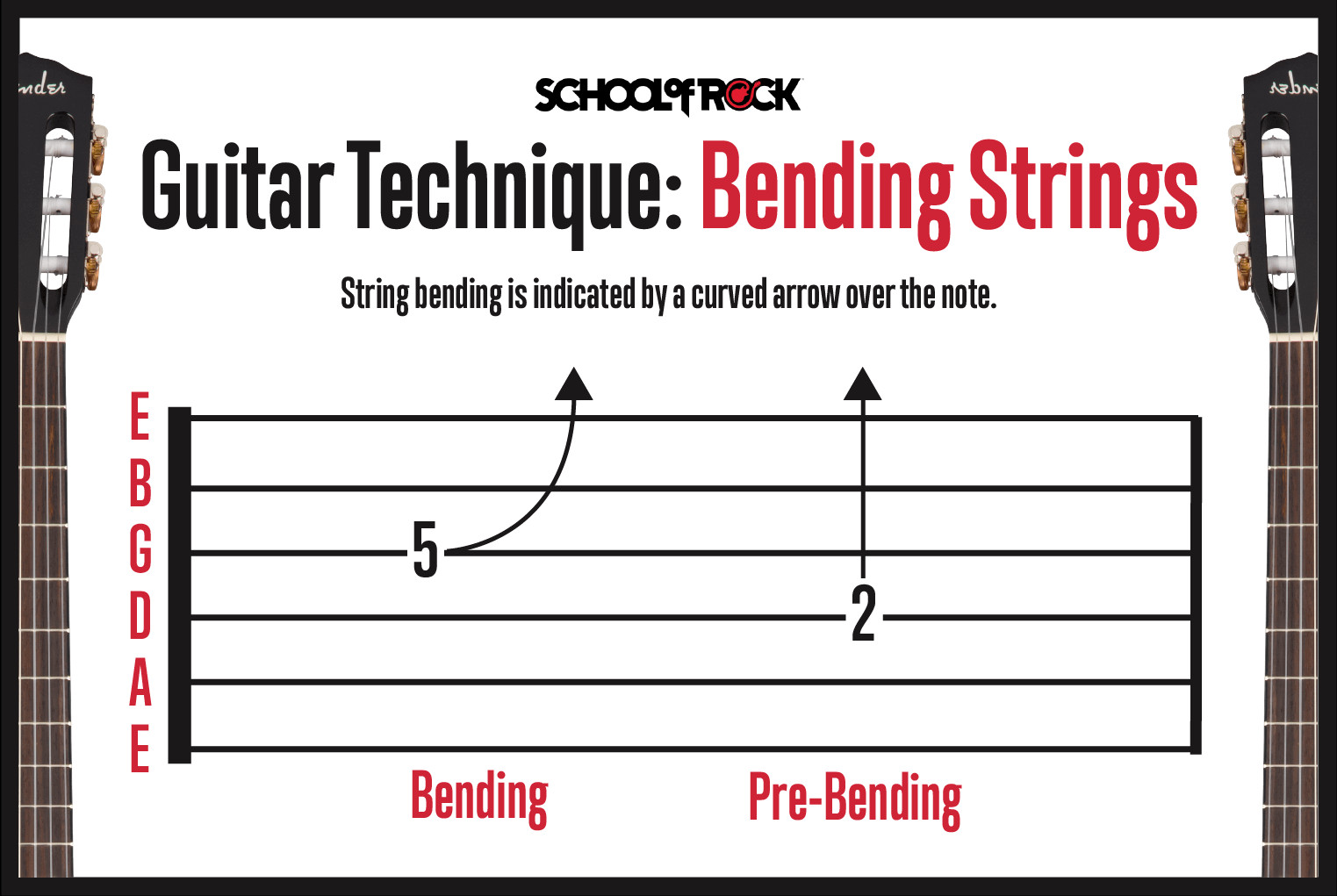 Guitar technique bending strings with the hand
Guitar technique bending strings with the hand
3.5. Hammer-Ons and Pull-Offs: Creating Seamless Transitions
Hammer-ons and pull-offs are techniques used to create seamless transitions between notes without picking each one individually. A hammer-on involves striking a note by “hammering” onto the fretboard with a finger, while a pull-off involves plucking a string by “pulling” off a fretted finger.
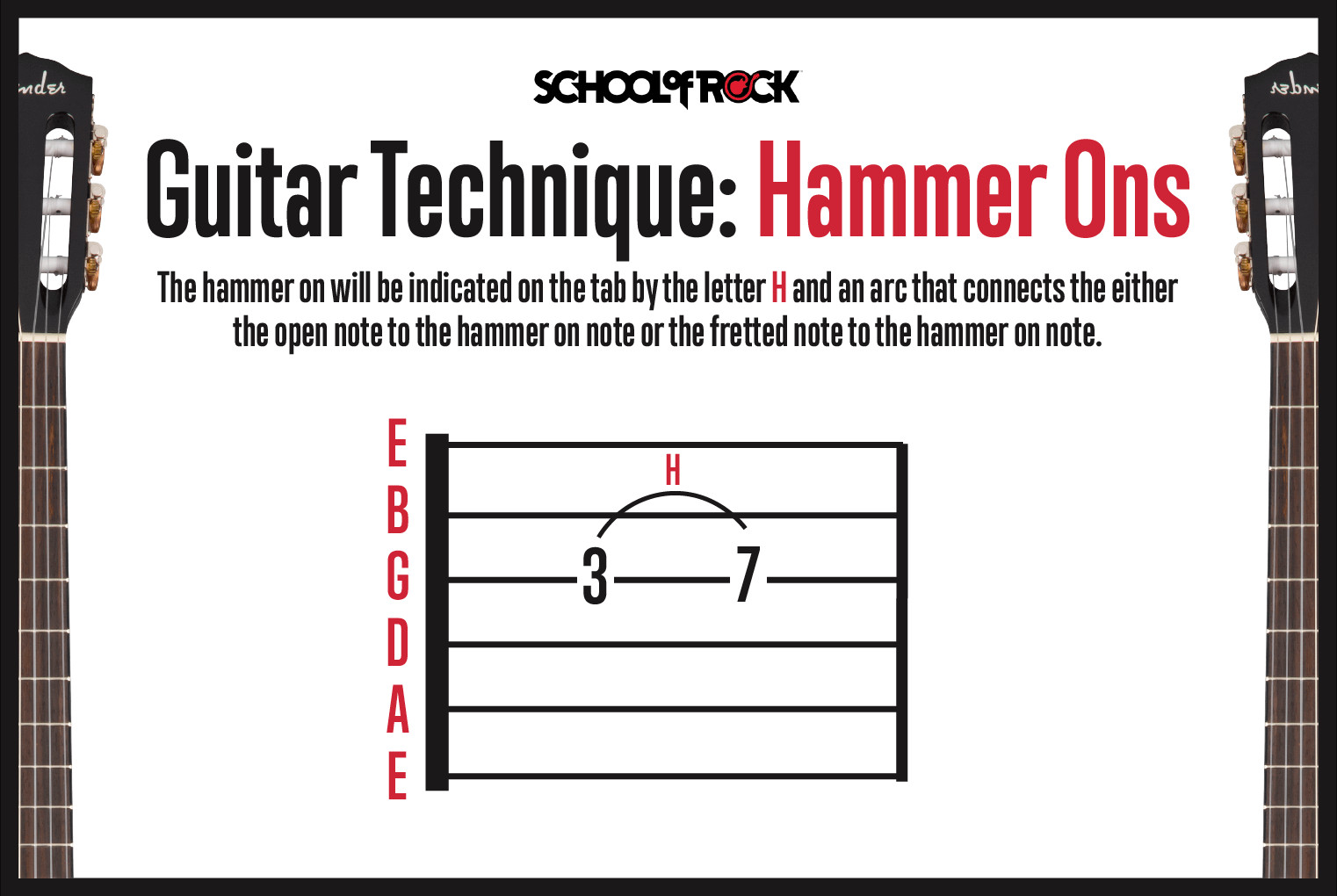 Guitar technique hammer ons with the hand
Guitar technique hammer ons with the hand
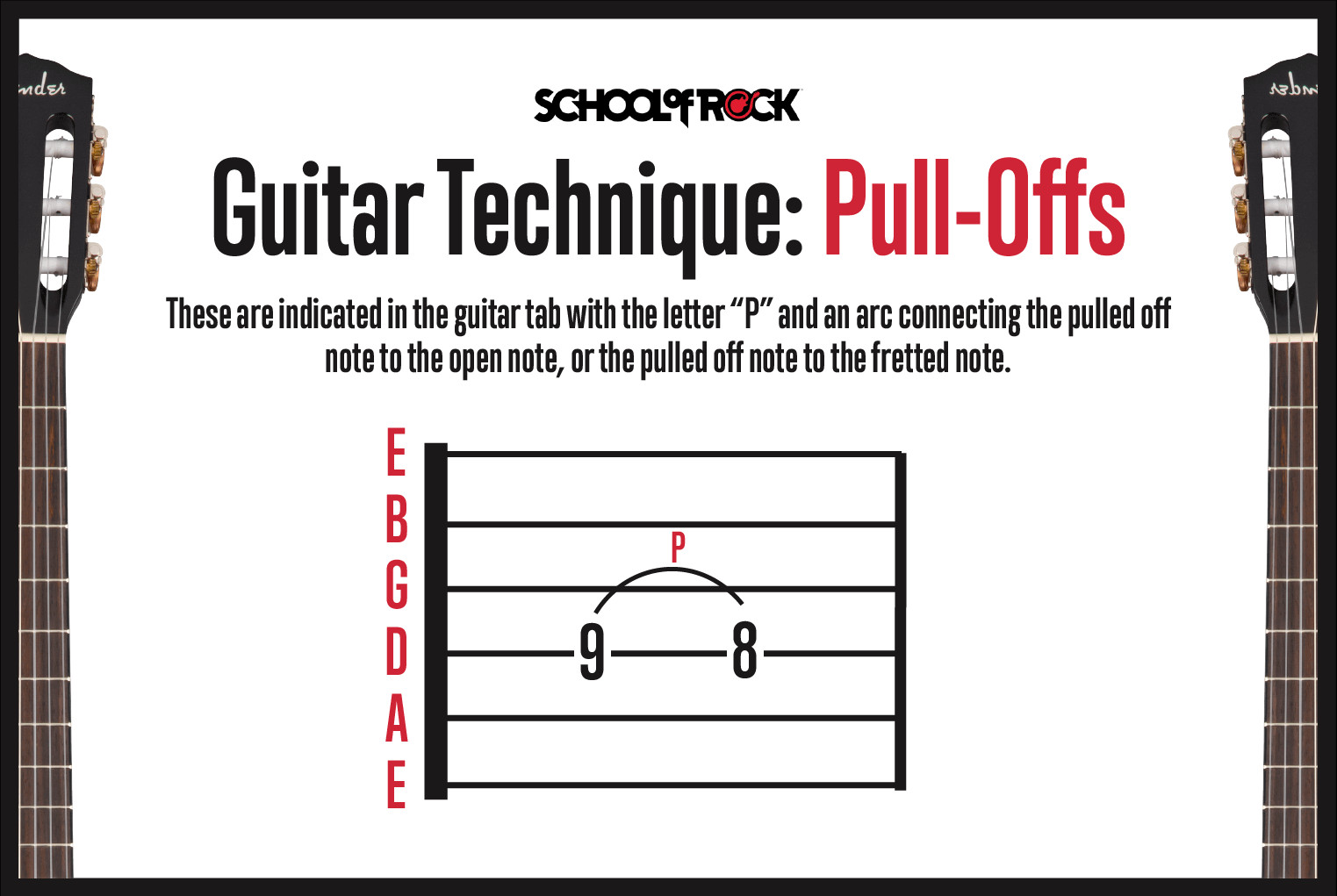 Guitar technique pull offs with the hand
Guitar technique pull offs with the hand
3.6. Slides: Gliding Between Notes
Slides involve gliding your finger from one fret to another without lifting it off the string. Guitar tabs use a forward slash (/) to indicate sliding up and a backslash () to indicate sliding down.
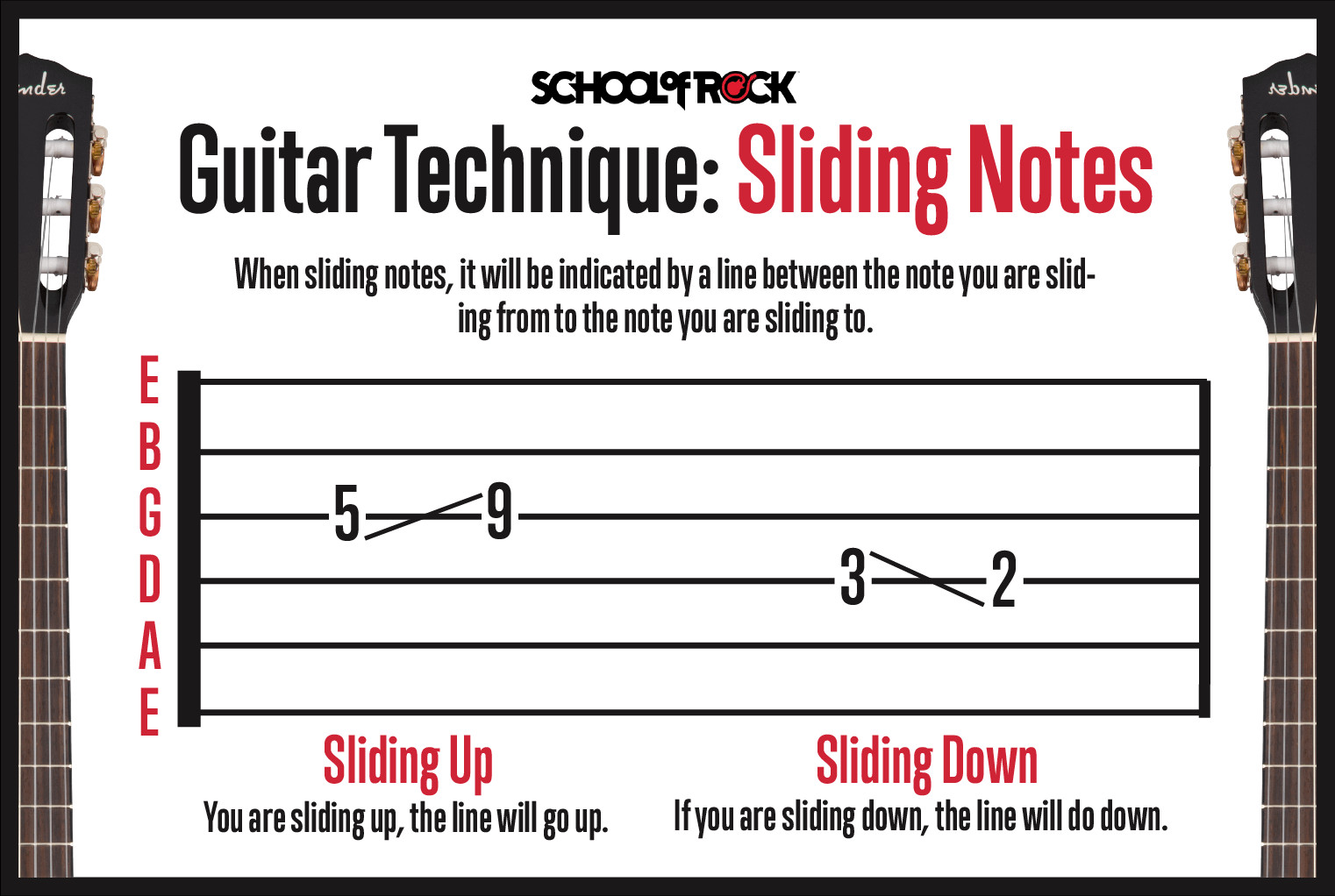 Guitar technique sliding notes with the hand
Guitar technique sliding notes with the hand
3.7. Vibrato: Adding a Shimmering Effect
Vibrato is a technique used to add a shimmering effect to a note by rapidly and slightly bending the string up and down. Guitar tabs often represent vibrato with a wavy line (~) above the note.
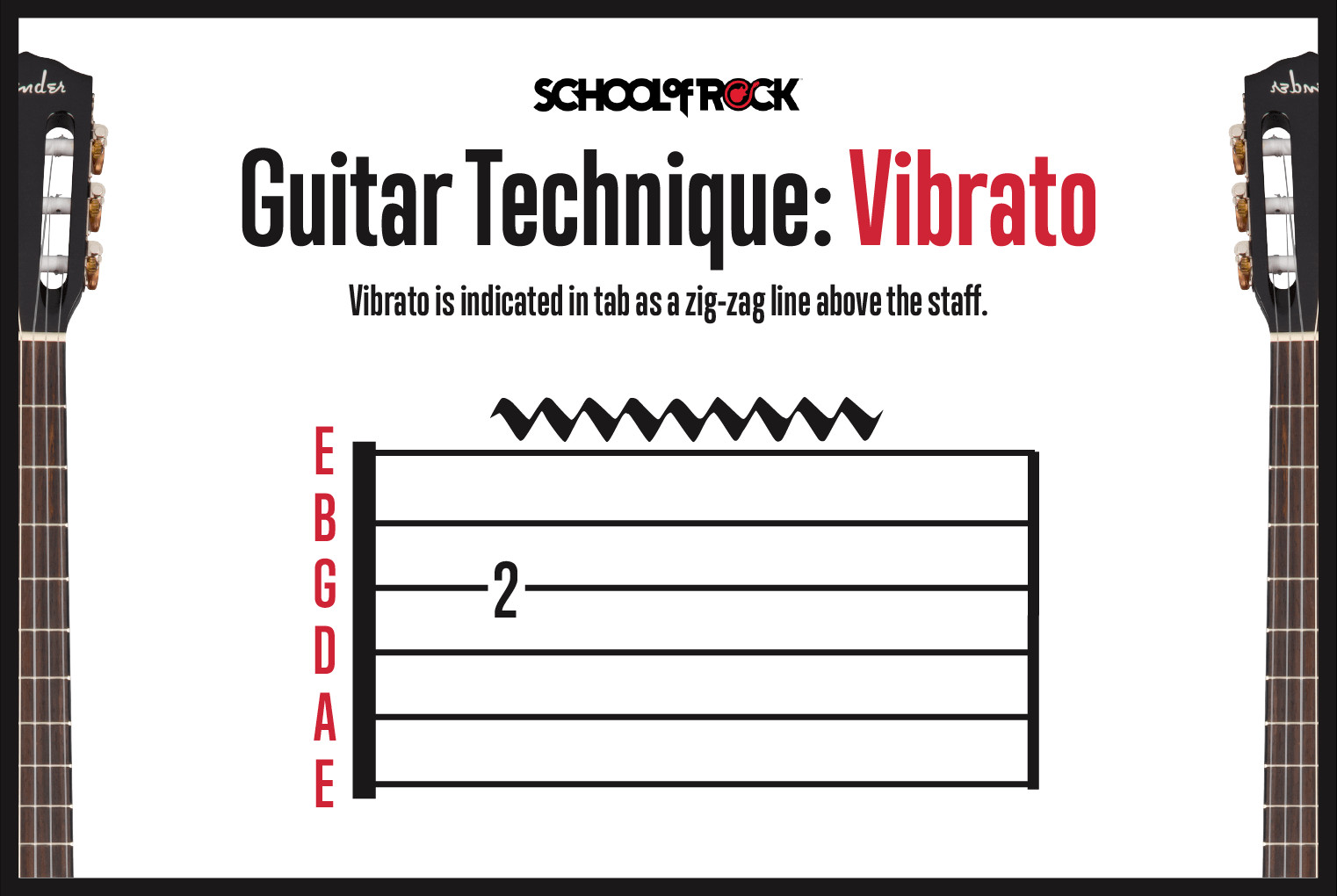 Guitar technique vibrato with the hand
Guitar technique vibrato with the hand
3.8. Tapping: Expanding Your Fretboard Reach
Tapping involves fretting notes by tapping the string onto the fretboard with a finger from your picking hand. This technique expands your fretboard reach and allows you to play complex melodies and riffs.
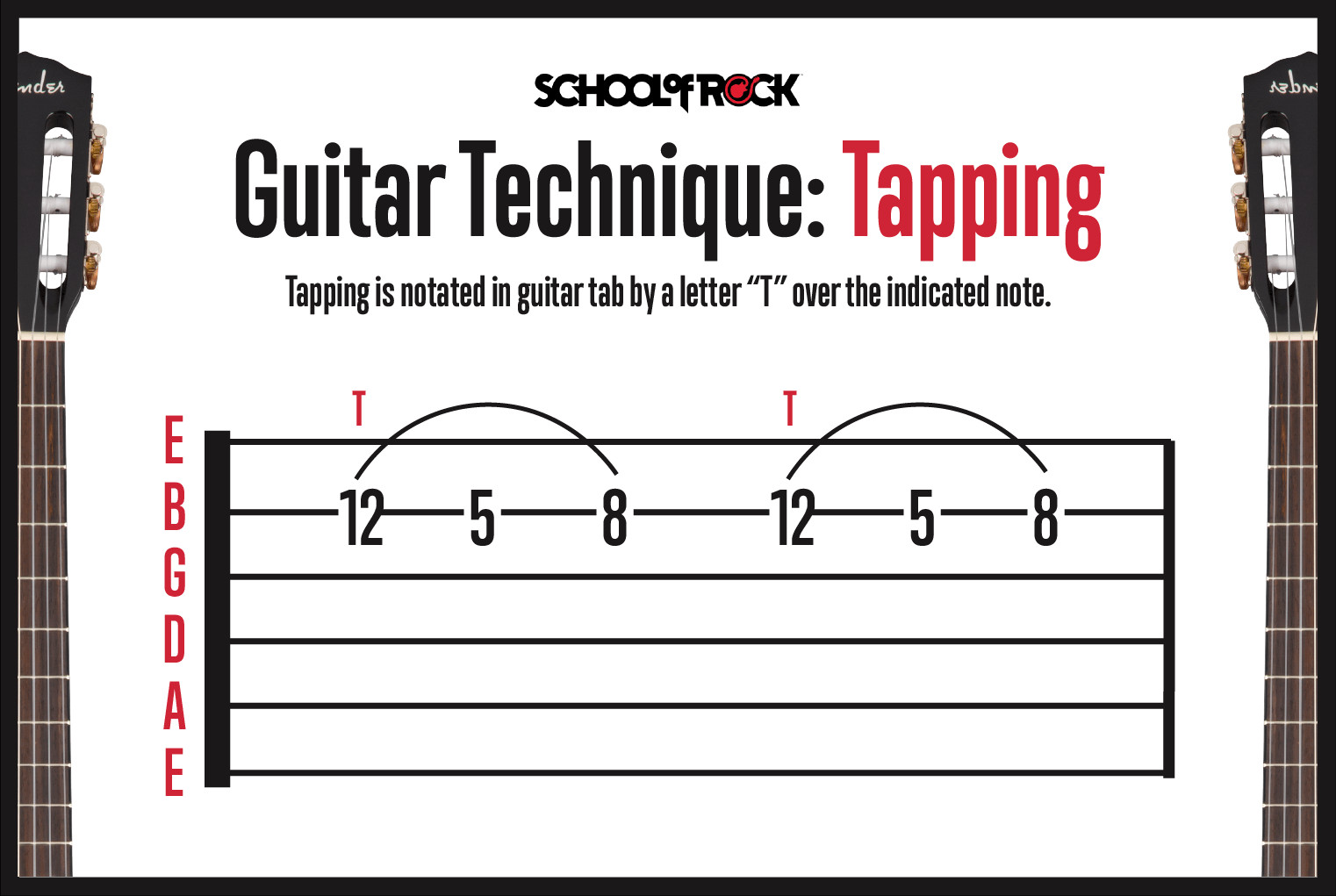 Guitar technique tapping notes with the hand
Guitar technique tapping notes with the hand
3.9. Strumming Patterns: Adding Rhythm and Groove
Strumming patterns add rhythm and groove to your guitar playing. Guitar tabs often use up and down arrows to indicate the direction of the strumming motion.
 Guitar technique strumming
Guitar technique strumming
4. Guitar Tabs vs. Chord Charts: What’s the Difference?
Guitar tabs and chord charts are both valuable tools for guitarists, but they serve different purposes. Understanding their differences can help you choose the right resource for your learning needs. Guitar tabs show specific notes and techniques, while chord charts provide a visual representation of chord shapes.
| Feature | Guitar Tabs | Chord Charts |
|---|---|---|
| Representation | Shows the exact frets and strings to play individual notes, riffs, and solos. | Depicts the finger positions on the fretboard to form chords. |
| Detail | Provides a detailed representation of the music, including specific techniques like bends, slides, and hammer-ons. | Offers a simplified view, primarily focusing on chord shapes and finger placements. |
| Complexity | Can represent complex musical passages and intricate guitar parts. | Best suited for learning basic chord progressions and accompanying songs. |
| Usefulness | Ideal for learning specific guitar parts, solos, and riffs. | Useful for learning to play chords and strum along with songs. |
| Skill Level | Suitable for guitarists of all skill levels, from beginners to advanced players. | Most helpful for beginner and intermediate guitarists learning to play chords. |
| Limitations | May not always indicate the rhythm or timing of the music. | Does not provide information on specific techniques or individual notes within a solo or riff. |
| Visual Learning | Requires understanding of fretboard layout and string numbering. | Offers a visual representation of chord shapes, making it easy to learn finger positions. |
5. Tips for Successfully Learning How to Read Guitar Tabs
Learning how to read guitar tabs can be a rewarding experience that opens up a world of musical possibilities. Here are some tips to help you on your journey:
- Start Simple: Begin with easy guitar tabs of songs you already know and love.
- Familiarize Yourself with Symbols: Take the time to learn the common guitar tab symbols and techniques.
- Practice Regularly: Consistent practice is key to improving your guitar tab reading skills.
- Use Online Resources: Take advantage of the many online resources available, such as tutorials, lessons, and guitar tab websites.
- Listen to the Song: Always listen to the song while reading the guitar tab to get a feel for the rhythm and timing.
- Take It Slow: Don’t rush the process. Take your time and focus on accuracy.
- Ask for Help: Don’t be afraid to ask for help from a guitar teacher or experienced player.
- Have Fun: Learning guitar should be enjoyable. Choose songs you love and have fun with the process.
6. Common Mistakes to Avoid When Reading Guitar Tabs
Even with the best intentions, it’s easy to stumble when learning to read guitar tabs. Here are some common mistakes to avoid for a smoother learning experience:
- Ignoring Rhythm: Guitar tabs primarily show note placement, not rhythm. Always listen to the song to understand the timing.
- Skipping Symbols: Don’t overlook symbols for bends, slides, or palm mutes. These add crucial expression to your playing.
- Assuming Finger Placement: Guitar tabs don’t always indicate the best finger to use. Experiment to find what’s most comfortable and efficient for you.
- Focusing on Speed: Accuracy is more important than speed, especially when starting out.
- Not Checking Tuning: Always ensure your guitar is properly tuned before practicing with guitar tabs.
- Giving Up Too Soon: Learning takes time. Be patient and persistent, and you’ll see progress.
- Relying Solely on Guitar Tabs: Supplement your learning with other resources like video tutorials and guitar lessons.
7. Choosing the Right Guitar Tabs: A Guide for Beginners
Selecting the right guitar tabs is essential, especially for beginners. Here’s how to choose guitar tabs that match your skill level and musical taste:
- Skill Level: Look for guitar tabs labeled as “beginner-friendly” or “easy.”
- Song Familiarity: Choose songs you already know and love.
- Tab Source: Opt for reputable guitar tab websites or books.
- User Ratings and Reviews: Check user ratings and reviews to gauge the accuracy and quality of the guitar tab.
- Preview: If possible, preview the guitar tab to ensure it’s well-formatted and easy to read.
- Multiple Versions: Compare different versions of the same guitar tab to find the one that suits you best.
- Audio/Video Support: Look for guitar tabs that come with audio or video support.
- Start with Simple Songs: Begin with songs that have simple chord progressions and minimal techniques.
8. Exploring Different Types of Guitar Tabs: Beyond the Basics
While standard guitar tabs are the most common format, several variations exist. Understanding these can broaden your ability to learn and play different styles of music.
- Standard Guitar Tabs: The most common type, using six lines to represent the guitar strings and numbers to indicate the fret positions.
- Power Tabs: Enhanced guitar tabs that include additional information such as rhythm, dynamics, and song structure.
- Text-Based Guitar Tabs: Simple guitar tabs created using text characters, often found in online forums and communities.
- Guitar Pro Tabs: Guitar tabs created using Guitar Pro software, offering advanced features such as playback, tempo control, and looping.
- ASCII Guitar Tabs: Basic guitar tabs created using ASCII characters, suitable for sharing via email or text.
9. Incorporating Guitar Tabs into Your Practice Routine
Guitar tabs can be a valuable tool for improving your guitar playing skills, but it’s important to incorporate them effectively into your practice routine.
- Warm-Up Exercises: Start with warm-up exercises to prepare your fingers and hands for playing.
- Set Goals: Set specific, achievable goals for each practice session.
- Focus on Accuracy: Prioritize accuracy over speed.
- Practice Slowly: Start by playing the guitar tab slowly and gradually increase the tempo.
- Use a Metronome: Use a metronome to improve your timing and rhythm.
- Break It Down: Break down complex guitar tabs into smaller, manageable sections.
- Repeat and Review: Repeat and review challenging sections until you’re comfortable with them.
- Record Yourself: Record yourself playing the guitar tab and listen back to identify areas for improvement.
10. Essential Resources for Finding Guitar Tabs Online
The internet is a vast resource for guitar tabs, but not all sources are created equal. Here are some reputable websites to find accurate and reliable guitar tabs:
- Ultimate Guitar (ultimate-guitar.com): A comprehensive guitar tab website with a vast collection of user-submitted guitar tabs.
- Guitar Tabs (guitartabs.cc): A popular guitar tab website with a user-friendly interface and a wide selection of songs.
- Songsterr (songsterr.com): A guitar tab website that offers interactive guitar tabs with playback and synchronized audio.
- AZ Chords (azchords.com): A guitar tab website with a focus on chord charts and lyrics.
- 911Tabs (911tabs.com): A search engine for guitar tabs that aggregates results from various guitar tab websites.
- Guitar Pro Tabs (guitarprotabs.org): A website dedicated to Guitar Pro guitar tabs, offering advanced features such as playback and tempo control.
11. How Guitar Tabs Can Enhance Your Musical Understanding
Guitar tabs are not just about learning to play songs; they can also enhance your musical understanding. By studying guitar tabs, you can gain insights into:
- Chord Progressions: Identifying common chord progressions used in different genres.
- Song Structure: Understanding how songs are structured, including verses, choruses, and bridges.
- Melodic Patterns: Recognizing recurring melodic patterns and motifs.
- Guitar Techniques: Learning new guitar techniques and how they are applied in different musical contexts.
- Music Theory: Applying music theory concepts such as scales, modes, and arpeggios.
12. Level Up Your Guitar Tab Skills: Advanced Techniques
Once you’ve mastered the basics, challenge yourself with these advanced techniques to further enhance your guitar tab reading and playing:
- Alternate Tunings: Experiment with alternate tunings like Drop D or Open G.
- Hybrid Picking: Combine flatpicking and fingerpicking techniques.
- Sweep Picking: Play arpeggios rapidly using a sweeping motion.
- Harmonics: Create bell-like tones by lightly touching the string at specific points.
- Improvisation: Use guitar tabs as a starting point for improvisation.
- Composition: Write your own songs using guitar tabs as a notation tool.
13. The Role of Ear Training in Conjunction with Guitar Tabs
While guitar tabs provide a visual representation of music, ear training is essential for developing your musical intuition and understanding. Combining ear training with guitar tabs can help you:
- Recognize Intervals: Identifying the distance between two notes.
- Identify Chords: Recognizing different chord types and qualities.
- Transcribe Music: Learning to transcribe music by ear.
- Improvise Melodies: Creating melodies by ear over chord progressions.
- Play by Ear: Playing songs without relying on guitar tabs.
- Develop Your Musical Memory: Memorizing songs and musical passages.
According to research from the Berklee College of Music, in July 2025, ear training significantly improves a guitarist’s ability to learn and internalize music, making guitar tabs an even more effective learning tool.
14. Maintaining Your Guitar for Optimal Tab Reading and Playing
A well-maintained guitar is essential for optimal tab reading and playing. Here are some tips to keep your guitar in top condition:
- Regular Cleaning: Wipe down your guitar after each playing session to remove dirt and grime.
- String Changes: Change your strings regularly to maintain optimal tone and playability.
- Proper Storage: Store your guitar in a case or gig bag to protect it from damage.
- Humidity Control: Maintain proper humidity levels to prevent your guitar from drying out or warping.
- Professional Setup: Have your guitar professionally set up by a qualified technician to ensure optimal playability.
- Fretboard Care: Clean and condition your fretboard regularly to prevent it from drying out.
15. The Impact of Guitar Tabs on Music Education
Guitar tabs have had a significant impact on music education, making guitar learning more accessible to a wider audience. Guitar tabs empower aspiring musicians to learn their favorite songs and develop their skills without needing formal training.
- Accessibility: Guitar tabs make guitar learning more accessible to beginners.
- Motivation: Guitar tabs provide a fun and engaging way to learn guitar.
- Self-Learning: Guitar tabs enable self-learning and independent study.
- Community: Guitar tabs foster a sense of community among guitar players.
- Creativity: Guitar tabs encourage creativity and experimentation.
- Democratization: Guitar tabs democratize music education.
16. Famous Guitarists Who Use or Have Used Guitar Tabs
Many famous guitarists, both past and present, have used or continue to use guitar tabs as part of their learning or creative process. Some notable examples include:
- Jimmy Page (Led Zeppelin): Known for his innovative guitar riffs and solos, Page has used guitar tabs to explore new musical ideas.
- Eric Clapton: A legendary blues and rock guitarist, Clapton has incorporated guitar tabs into his practice routine.
- Jimi Hendrix: A groundbreaking guitarist known for his improvisational skills, Hendrix used guitar tabs as a tool for learning and experimentation.
- Steve Vai: A virtuoso guitarist known for his complex compositions, Vai has used guitar tabs to transcribe and analyze his music.
- Joe Satriani: A renowned guitar instructor and performer, Satriani has used guitar tabs to teach his students and share his music with the world.
17. Are There Legal Considerations When Using Guitar Tabs?
Yes, there are legal considerations to be aware of when using guitar tabs, particularly regarding copyright law. Creating and distributing guitar tabs without permission from the copyright holder can be considered copyright infringement.
- Copyright Protection: Musical compositions are protected by copyright law.
- Fair Use: Fair use is a legal doctrine that allows limited use of copyrighted material without permission for certain purposes, such as criticism, commentary, news reporting, teaching, scholarship, and research.
- Permission: To legally create and distribute guitar tabs, you must obtain permission from the copyright holder.
- Public Domain: Musical compositions in the public domain are not protected by copyright law and can be freely used.
18. The Future of Guitar Tabs: Trends and Innovations
The future of guitar tabs is likely to be shaped by technological advancements and evolving musical trends. Some potential trends and innovations include:
- Interactive Guitar Tabs: Enhanced guitar tabs with features such as playback, tempo control, and looping.
- AI-Powered Guitar Tabs: Artificial intelligence algorithms that automatically generate guitar tabs from audio recordings.
- Augmented Reality Guitar Tabs: Augmented reality applications that overlay guitar tabs onto the real-world fretboard.
- Personalized Guitar Tabs: Customized guitar tabs tailored to individual skill levels and musical preferences.
- Cloud-Based Guitar Tab Libraries: Online platforms that offer access to vast collections of guitar tabs via subscription services.
19. Why Should I Choose guitarplayers.net for My Guitar Tab Needs?
Guitarplayers.net offers a comprehensive resource for guitarists of all levels, providing high-quality guitar tabs, lessons, reviews, and a supportive community. You can find a wide variety of guitar tabs, from beginner-friendly songs to advanced pieces, all carefully curated to ensure accuracy and readability.
At guitarplayers.net, you’ll find a wealth of articles, tutorials, and tips to help you improve your guitar playing skills. Our experienced instructors provide clear, concise guidance on everything from basic techniques to advanced concepts.
Our in-depth reviews of guitars, amps, pedals, and other gear can help you make informed decisions about your equipment. We provide honest, unbiased opinions to help you find the right gear for your needs and budget.
Our active forum and social media groups provide a space for guitarists to connect, share ideas, and support each other. You can ask questions, get feedback on your playing, and find inspiration from other musicians.
Address: 1140 Boylston Street, Boston, MA 02215, United States
Phone: +1 (617) 747-2261
Website: guitarplayers.net
20. Frequently Asked Questions (FAQs) About Guitar Tabs
Here are some frequently asked questions about guitar tabs:
- What are guitar tabs? Guitar tabs are a simplified form of musical notation that shows you where to put your fingers on the fretboard to play specific notes or chords.
- Are guitar tabs easy to learn? Yes, guitar tabs are easier to learn compared to standard music notation.
- What do the lines and numbers in guitar tabs represent? The lines represent the six strings of the guitar, and the numbers indicate which fret to press down on each string.
- What do the symbols in guitar tabs mean? Guitar tabs use various symbols to indicate playing techniques such as bends, slides, hammer-ons, and pull-offs.
- How do I find guitar tabs online? You can find guitar tabs on websites such as Ultimate Guitar, Guitar Tabs, and Songsterr.
- Are guitar tabs accurate? The accuracy of guitar tabs can vary, so it’s important to check multiple sources and listen to the song to verify the guitar tab.
- Can I use guitar tabs to learn to play guitar? Yes, guitar tabs can be a valuable tool for learning to play guitar, but it’s also important to develop your ear and learn music theory.
- What are the legal considerations when using guitar tabs? Creating and distributing guitar tabs without permission from the copyright holder can be considered copyright infringement.
- What are some tips for learning how to read guitar tabs? Start simple, familiarize yourself with symbols, practice regularly, and use online resources.
- How can guitar tabs enhance my musical understanding? Guitar tabs can help you understand chord progressions, song structure, melodic patterns, and guitar techniques.
Guitar tabs are a valuable tool for guitarists of all levels, providing a simplified and accessible way to learn new songs and improve your skills. By understanding the basic structure of guitar tabs, deciphering guitar tab symbols, and incorporating guitar tabs into your practice routine, you can unlock a world of musical possibilities and take your guitar playing to the next level. We invite you to explore the vast collection of guitar tabs, lessons, and resources available at guitarplayers.net and join our vibrant community of guitar enthusiasts. Whether you’re a beginner or an experienced player, guitarplayers.net has everything you need to fuel your passion for guitar and achieve your musical goals.
